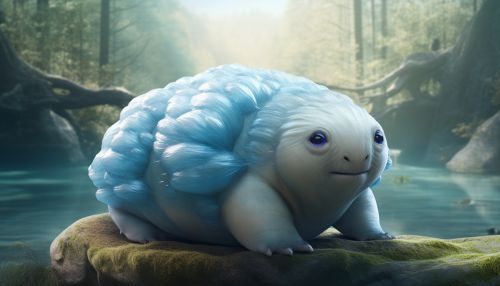Cryptobiosis
Introduction
Cryptobiosis is a physiological state in which an organism's metabolic activities come to a reversible standstill. This state is typically induced by extreme environmental conditions, such as desiccation, freezing, or oxygen deficiency. The term "cryptobiosis" originates from the Greek words "kryptos" and "bios", meaning "hidden life". This phenomenon is observed in a variety of organisms, including tardigrades, nematodes, rotifers, and certain species of yeast and bacteria.


Mechanisms of Cryptobiosis
The specific mechanisms by which organisms enter and exit cryptobiosis are not fully understood and are the subject of ongoing research. However, it is known that these mechanisms are highly complex and involve a variety of physiological changes.
Anhydrobiosis
Anhydrobiosis is a form of cryptobiosis induced by desiccation. Organisms capable of anhydrobiosis can survive almost complete dehydration, often for extended periods. This is achieved by the synthesis of protective molecules, such as trehalose, which replace water in the cell and preserve the structure of cellular proteins and membranes.
Cryobiosis
Cryobiosis is a form of cryptobiosis induced by freezing temperatures. Organisms capable of cryobiosis produce antifreeze proteins that prevent the formation of ice crystals within their cells, thereby preventing cellular damage.
Anoxibiosis
Anoxibiosis is a form of cryptobiosis induced by oxygen deficiency. Organisms capable of anoxibiosis can survive in environments with extremely low oxygen levels. They achieve this by switching their metabolism to anaerobic pathways, which do not require oxygen.
Cryptobiosis in Different Organisms
Different organisms have evolved unique adaptations to survive extreme conditions through cryptobiosis.
Tardigrades
Tardigrades, also known as water bears, are one of the most well-known organisms capable of cryptobiosis. They can survive in a desiccated state for up to a decade, and can also withstand extreme temperatures, radiation, and the vacuum of space.
Nematodes
Certain species of nematodes, or roundworms, are capable of anhydrobiosis. They can survive in a desiccated state for several years, and can also withstand extreme temperatures.
Rotifers
Rotifers, a type of microscopic aquatic animal, are capable of cryptobiosis. They can survive in a desiccated state for several years, and can also withstand freezing temperatures.
Yeast and Bacteria
Certain species of yeast and bacteria are capable of cryptobiosis. They can survive in a desiccated state for several years, and can also withstand extreme temperatures and radiation.
Implications and Applications of Cryptobiosis
The study of cryptobiosis has potential implications for a variety of fields, including medicine, agriculture, and space exploration.
In medicine, understanding the mechanisms of cryptobiosis could lead to new methods for preserving organs for transplantation. In agriculture, cryptobiotic organisms could be used to create crops that are resistant to drought and other extreme conditions. In space exploration, cryptobiosis could provide a means for preserving life during long-duration space missions.
